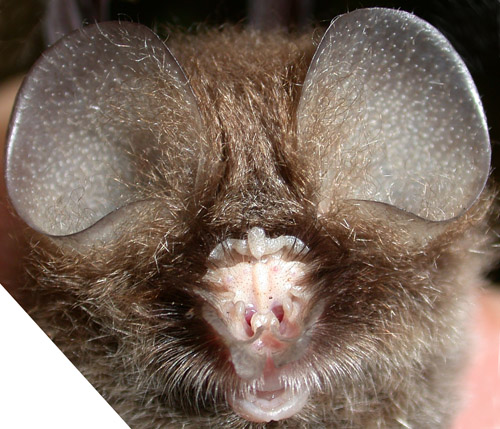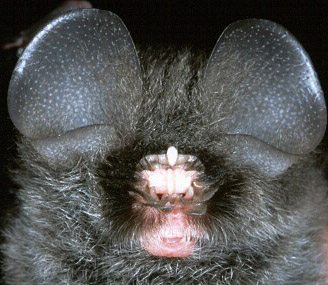Coelops frithii
East Asian Tailless Leaf-Nosed Bat
Wuwei Tifu
Morphological description Life history Distribution Habitat Roost sites and roosting patterns Emergence and flight pattern Foraging behaviour Echolocation calls Status and protection
Photos by Steve Rossiter, taken in Taiwan
Morphological Description
· The tail is very reduced in size. Antitragus large. Horseshoe on nose leaf extensive, separated by a fissure in the centre and has long leaflets on basal part. Huge ears.
· Fur brown at tips, grey at base.
· Forearm length 35-42 mm.
· Dental formula 1.1.2.3/2.1.2.3 as in Hipposideros.
Life history
· Breeding females found in January and March in Java (Smith & Xie 2008).
Distribution
The distribution in China is shown by the dots on the map (as given by Zhang et al. 1997). Extends across Indochina.

Habitat
· A forest species.
Roost sites and roosting behaviour
· Roosts in caves and manmade structures such as pill boxes. may form colonies in trees.
· Emergence and flight pattern
· Not known
Foraging behaviour
· Not known.
Echolocation calls
· Some calls recorded lack the constant frequency portion typical of hipposiderids, but this could be because of inadequate sampling of highest frequencies.
Status and protection
· There is no estimation of population size for China.
· Status is RL-VU A1cd in China (Smith & Xie 2008).
· Caves, and forests should be protected as their habitats.

